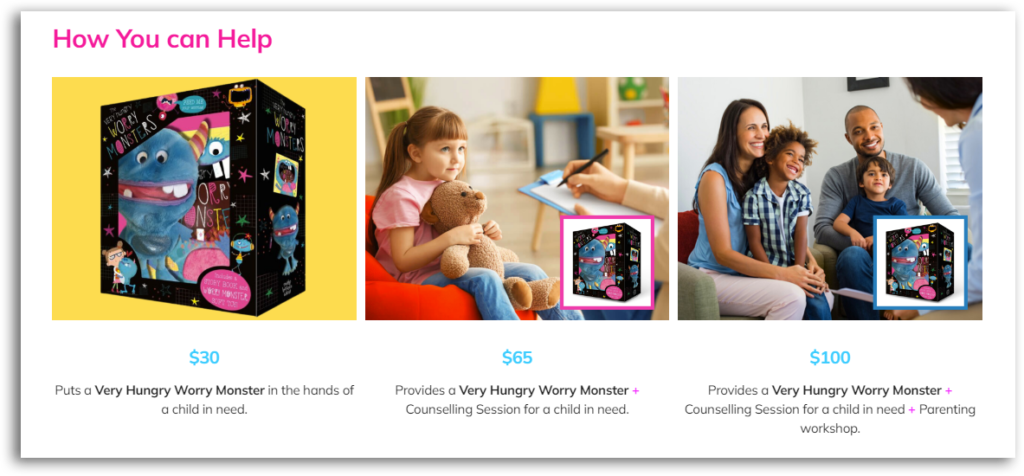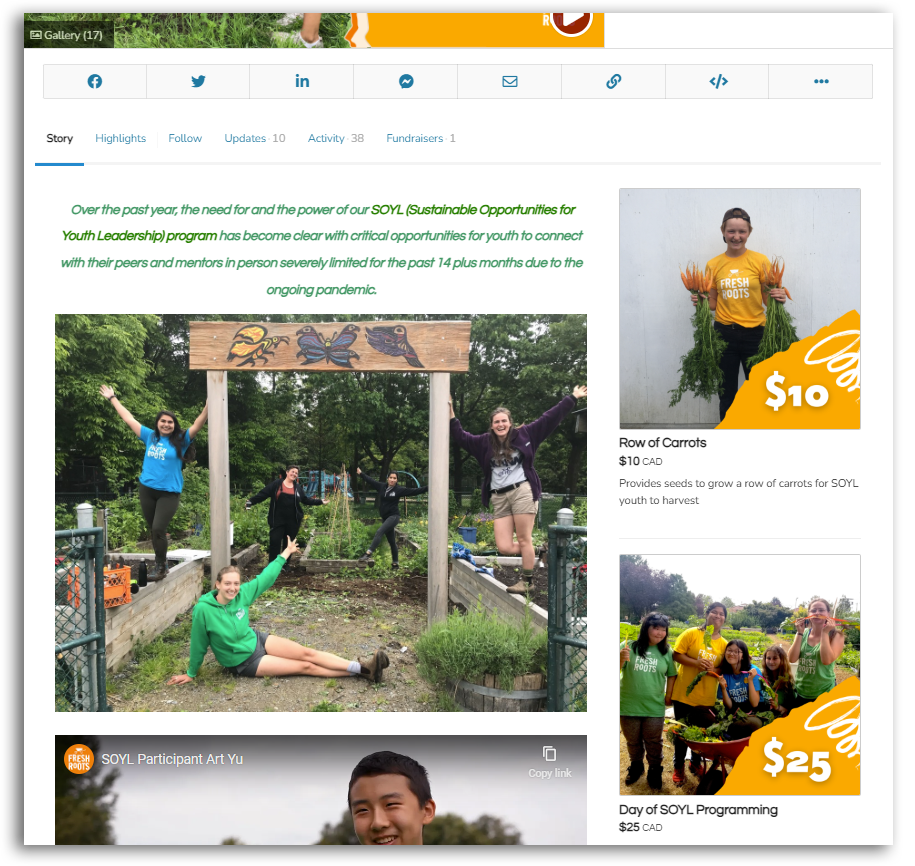Units of impact are essential for communicating value in a supporter’s contribution. Especially in this evolving fundraising landscape, where younger generations are starting to make up higher percentages of our donors.

I’ve been talking about units of impact for years – in our story guidelines, webinars, toolkits, everywhere. They are crucial for crowdfunding success nowadays, and we felt it was time to do a deep dive into the details of these helpful elements.
What are units of impact?
Units of impact are representations of how funds contributed to a fundraising campaign will be used. They can be represented in different ways:
- Literal: If you have many different items needed for one or more beneficiaries, describe what certain amounts will purchase. For example:
- $10 for a row of seeds for a community garden.
- $50 is a tank of gas to bring produce to market.
- Goal breakdown: Helpful for a campaign with one goal for multiple beneficiaries. Outline why you settled on your goal.
- One hundred vaccinations at $50 each for 100 cats in our shelter, so our campaign goal is $5000.
- One hundred vaccinations at $50 each for 100 cats in our shelter, so our campaign goal is $5000.
- Representative: If the above two scenarios don’t fit, help your supporters understand what contributions will allow the beneficiary(ies) to do. It might not be exact, but it’ll paint a picture.
- Help purchase a new accessible bus to bring the mobility-challenged students in our school to fun and educational experiences. You’ll send a ten-year-old girl obsessed with space to the observatory to meet a real astronaut. Or, a 14-year-old budding chef may join a specialized cooking class.
Why are they useful?
I’ve quoted this study a couple of times in articles and toolkits – but it’s just so helpful! The Lilly School of Philanthropy determined donors today focus more on what impact their gifts bring than in the past. They’re giving smaller amounts than generations before, but more often.
And that means we have more opportunities to capture supporter interest. When supporters connect with your campaign, they’re more likely to share with their audiences.
Who can use them?
Anyone! Individuals, organizations, big campaigns, little campaigns, creators, fundraisers, philanthropists, entrepreneurs… Few campaigns exist that can’t have any sort of unit of impact.
Sure, some might need some more creative thinking than others. But if you are stuck, please email me and my team. We will help!
How do I determine my units of impact?
For some, units of impact will be easy and straightforward. Unfortunately, this isn’t the case for everyone. If you’re stuck, ask yourself the following questions (we’ll create a mock situation as an example to help you understand):
- What specifically are you purchasing with the funds raised?
- Example – Your project is to buy a permanent space for a teen shelter. Costs will be the downpayment, closing fees, renovations and furniture/decor.
- How do these items/services relate to your bottom line? What will they bring to the solution for the problem you’ve outlined?
- This shelter will provide a safe, inclusive spot for teenagers in urgent need of help. It’ll also give our staff space to plan a course of action and longer-term solutions for these teens.
- What steps will the beneficiary(ies) take between receiving the product/service/benefits to no longer needing help from this project?
- One teen spends a few nights in a warm bed with meals provided. They stay until we determine they’re safe to return home or move them to a longer-term shelter, foster care, etc.
- If you have multiple beneficiaries, how many can you bring fully through those series of steps?
- Your new shelter will have space for ten beds and is expected to be at mostly full capacity every night. You estimate about 150 teenagers through your doors in your first year.

Now, from your answers to these questions, can you think of any units of impact?
From our example, we could:
- Break down the costs of the home. Create a Microproject campaign to add smaller sub-campaigns (1 subcampaign per room, per construction phase, ‘sponsor’ items/rooms/etc.).
- Focus on the individual journey and impact – take those steps and list them as your supporters helping make it happen. Try to set approximate monetary values if possible.
- Your $25 donation funds one bed for one night for a teen in need.
- Your $60 donation covers all meals for one teen for a week’s stay.
- Your $100 donation is one hour with our in-house counsellor.
- Focus on the large, overall picture. Talk about the number of teens per year your shelter will help (even if speculated/approximate).
Where should Units of Impact go on the campaign?
You have two options for units of impact:
- Write them into your story, as did the Pathstone Foundation with their Worry Monster campaign:

2. On the side of your campaign as ‘Wishes,” like Fresh Roots chose for their ‘Make it SOW’ campaign.

Make units of impact an essential part of your campaign kit and contact us for help if you’re stuck!
Yours in success,
Shan
Have questions?
We’re here for you! Feel free to email us at support@connectionpoint.com.
Ready to go?
Click to begin a campaign on:




